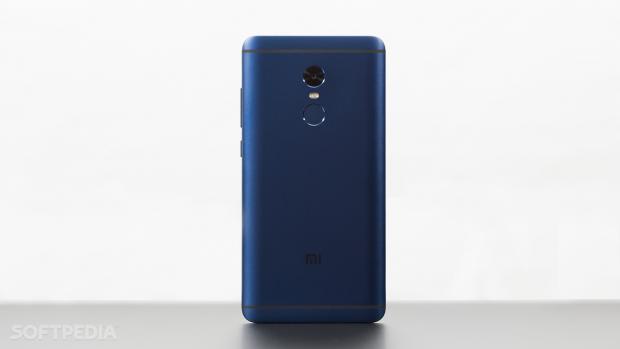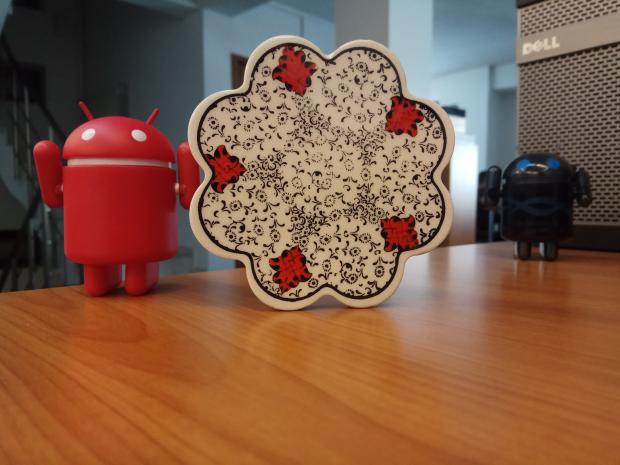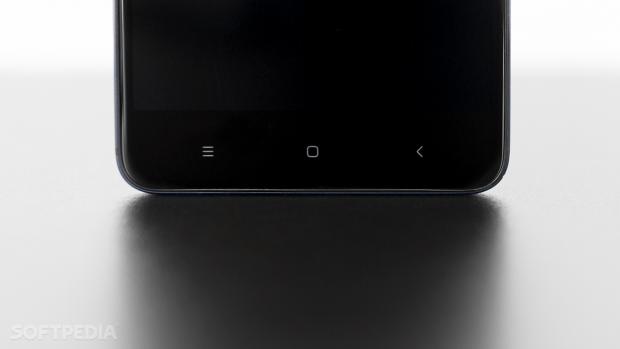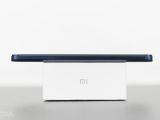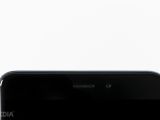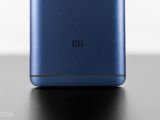| DESIGN | HARDWARE |
| SOFTWARE | CONCLUSIONS |
While the majority of Chinese phone OEMs put manufacturing costs before anything else when launching a new device, Xiaomi is going for a different approach and tries to create a mix which, although it doesn’t ignore pricing, makes quality a priority.
This is why Xiaomi has slowly become one of the biggest Chinese manufacturers and a top rival to bigger companies like Apple and Samsung, although it still has a long way to go to match their sales.
As a result, the majority of Xiaomi devices not only bring features that you typically find on more expensive models launched by the likes of Samsung and Apple but also come with price tags making them extremely compelling products, especially for the masses who aren’t necessarily willing to spend a fortune to have the latest piece of technology.
One such model is the Redmi Note 4, a smartphone that comes with mid-range to high-end features, but with pricing that puts it in the mid-range to lower-end market.
The original version of the Redmi Note 4 runs on a Mediatek MT6797 Helio X20 processor, but Xiaomi already launched an upgraded model a couple of months ago that’s powered by the Snapdragon 625 chip.
Both configurations show the Redmi Note 4 is nothing more than a mid-ranger, though there are features proving that Xiaomi is aiming for more with this device.
The Mediatek version with a blue body (available for $199.99 at Gearbest, coupon code NNote) is the one we’re taking for a spin today, so read on to find out what Xiaomi’s phablet is all about.
DESIGN
The look of the phone is nothing out of the ordinary, and at first glance, the Xiaomi Redmi Note 4 looks similar to many other Android phones out there.
The front side is dominated by the 5.5-inch IPS display with a screen-to-body ration of 72.7 percent, which is quite impressive given the fact that high-end devices like the iPhone 7 Plus are well below the 70 percent threshold (67.7 percent in the case of the bigger iPhone).
There’s no front home button and, in typical Android fashion, the fingerprint sensor is placed on the back, keeping the look of the phone as clean as possible. The bottom bezel holds the virtual navigation button available on the Android, while the top of the front fascia is the home of the front-facing camera, a microphone, and a headphone jack.
The bottom of the phone, on the other hand, looks like 99 percent of today’s smartphones, with symmetrical speakers (out of which only one is working, while the second serves for microphones) and a micro USB connector for charging and data transfers.
“I'm blue, da ba dee, da ba die.”
Volume controls and the lock button are placed on the right side, while the left side is left without a button and only holds the SIM card tray.
The back of the phone adopts the same clean approach, and there are two symmetrically centered cutouts for the camera and the fingerprint sensor, with a dual-LED flash placed in the middle just between them.
The black antenna lines on the blue models aren’t really striking, though we would have preferred not to see them at all, but they do come in line with the Mi branding in the lower part of the phone.
In the end, there’s nothing super-exciting when it comes to the looks of the Xiaomi Redmi Note 4 and it looks exactly like you’d expect an Android to look. There are no exquisite materials, and Xiaomi went for plastic, obviously to keep pricing as low as possible, but the phone isn’t dull either. The blue version makes it kind of special given that most manufacturers go for black, silver, and white models, but depending on lighting, you can easily mistake it for black.
HARDWARE
Before anything else, remember the Xiaomi Redmi Note 4 is a mid-ranger that’s not supposed to excel in terms of hardware, but it’s not expected to disappoint either. And yet, in terms of hardware and performance, we’ve come across features that don’t necessarily match this category, and we’re detailing all of them below.
CPU
As said, the original Redmi Note 4 comes with a Mediatek chip, while the newer model features a Qualcomm MSM8953 Snapdragon 625 processor.
Although at first glance the Snapdragon is the better choice, the spec sheet proves otherwise: the Mediatek is the MT6797 Helio X20 featuring 10 cores and clocked at 2.1 GHz, while the Snapdragon is an octa-core unit running at 2.0 GHz.
“It's not a Snapdragon, but it's still pretty good.”
Does this mean that the Mediatek is the more powerful option? Yes and now. First and foremost, the Mediatek chip, although it can provide better performance at certain moments, it’s not as energy efficient as the Snapdragon. Qualcomm has specifically optimized the Snapdragon 625 for a balanced mix of performance and power usage, so the latter provides all-round performance all the time.
Then, the Mediatek is getting substantially warmer when running demanding tasks, and this is one of the reasons it’s also a bigger battery hog. Overheating is not a problem on the Redmi Note 4, but if you’re playing a game or watching a video in HD resolution, you do feel the device getting hot in your hand.
Display
The display is nothing to get excited about on the Redmi Note 4, though it serves its purpose very well, without excelling or letting you down at any moment.
Xiaomi picked a 5.5-inch LCD display with a resolution of 1920x1080 pixels, but without a doubt, this leaves those who were aiming for a premium device hoping for more.
The quality of the screen is average to say the least, and while it features good response times, colors and graphics overall are not as crisp and vivid as you’d expect them to be. The display without a doubt aligns with the rest of the specs in the mid-range market, but it’s hard to consider this a highlight of the phone.
Storage
Xiaomi is offering three different storage versions for the Redmi Note 4 (both the old and the new), as it follows: the more affordable version with 2GB RAM can be ordered with just 16GB storage, while the 3GB configuration is available with 64GB storage. There’s also a more expensive version with 4GB and 64GB storage.
Just like the majority of Chinese phones, the Xiaomi Redmi Note 4 also comes with a microSD card slot, so you can add an additional 256GB storage should you want more space to save your pics and videos.
Camera
The Redmi Note 4 comes with a mix of a 13-megapixel camera on the back and 5.0-megapixel camera on the front, both with decent specs that push the device a little bit beyond the mid-range market.
The main 13-megapixel camera (F2.0) boasts the typical feature package, like dual-LED flash, touch focus, face detection, panorama and 1080p video recording at 30 fps.
Performance of the camera is unexpectedly good, especially in perfect lighting conditions, with vivid colors and balanced contrast, though we’ve discovered that saturation depends on a series of factors and post-processing doesn’t always help.
Case in point is the shot below, where the Xiaomi Redmi Note 4 couldn’t preserve the yellow, but instead turned it to white, not only in the raw photo but also after the automated edits recommended by the camera app. The same shot taken with an iPhone 7 maintained natural colors, but Xiaomi could address this with a future update should it focus a bit more on camera performance.
As far as night shots are concerned, this is where the camera goes south, as we’ve experienced not only shots full of noise, but also slower focus. Without a permanent source of light on the subject, the Xiaomi Redmi Note 4 needs more time to focus, and in the case of action shots, this could often mean that you’re missing the right moment to take a picture.
The CMOS sensor features backside illumination, but though noise should be substantially reduced, the differences at this point are barely noticeable. Perhaps more software optimizations are needed, and again this calls for Xiaomi to continue working on improving the software side of the phone in the coming months.
In the case of video, the Redmi Note 4 does not disappoint, but it doesn’t impress either, with quality good enough for the majority of users, though premium phone owners would expect more. Video stability is good though, but the phone again loses focus every once in a while.
This is kind of unexpected given that Xiaomi included the so-called Phase Detection Autofocus (PDAF), which according to the company should lead to focusing taking place in just 0.1 seconds. This is specifically aimed at shooting moving objects, Xiaomi claims, but we’ve found it rather ineffective, and shooting moving objects usually comes with plenty of blur.
Battery
The battery of the phone is the one that takes you by surprise before letting you down. First of all, the specs: the Redmi Note 4 features a 4,100 mAh unit that should easily get you through the day, and without a doubt, this is quite an easy task, especially if you’re not a hardcore user.
Xiaomi decided to go for a micro USB charging port, which is surprising for a new smartphone, as the same version is being used for the 2017 model too.
And here come the good and the bad parts. While the 4,100 mAh battery is a monster and provides up to 36 hours of life on average, it charges painfully slow, especially because it lacks a fast charging system.
Using the included charger, the Xiaomi Redmi Note 4 goes from 10 percent to 100 percent in 3 hours, while using a USB cable connected to a USB 3.0 port doubles that amount of time.
Other features
The Redmi Note 4 also comes with a fingerprint sensor placed on the back of the phone, which you can easily reach when pulling the device out of the pocket. This is a configuration that many other devices have embraced, including Google for the Nexus and Pixel lineups, and without a home button, it obviously makes sense.
Xiaomi also installed a headphone jack (unlike others), and it’s placed at the top of the phone, though we’d prefer having it at the bottom for a more natural position.
And last but not least, the Redmi Note 4 features mono speakers, though it does come with a stereo speaker grille design, but this is just for aesthetics and covering one side of the phone leaves you with no sound at all.
SOFTWARE
The Xiaomi Redmi Note 4 is powered by Xiaomi’s own MIUI version 8, which itself is running on Android 6.0. There’s no word on the update to Nougat for the time being, but this should take place sooner or later, especially because it’s a new device.
For those who haven’t used an Android phone before, Xiaomi’s own Android ROM comes as a pretty user-friendly approach, while experienced users would rather go for the stock experience available on the Pixel.
But what Xiaomi does with MIUI is to offer not only a more user-friendly and eye-candy interface but also features and apps that aren’t available in stock Android. Additional apps are also included, and the international version comes with the Google Play Store and the other Google apps.
“Launchers are always there for you.”
One of the best things about Redmi Note 4 is that it’s highly customizable, though this is a valid point for pretty much any Android device. But Xiaomi is offering plenty of themes that you can download on the phone, as well as wallpapers from a wide variety of categories, so no extra apps or tweaks are necessary.
The settings screen also comes with configuration options that aren’t available by default on Android, including the possibility of changing the carrier name to whatever you like, but also with extra features such as second space, which is more like a multiple desktops implementation on a phone.
The standard system settings are still there, but you also get a few bonus options for them, as is the case of the battery, where you can toggle between a couple of power settings (like power modes on Windows) and tweak system animations to increase battery life or make the UI more eye-candy.
All in all, Xiaomi’s MIUI is a nice touch to Android and even though there are users who’d rather go for a raw experience, third-party launchers are always there for this purpose. And Google’s own launcher can also be downloaded to make it feel more like stock Android at any point.
THE BOTTOM LINE
After spending a couple of weeks with the Xiaomi Redmi Note 4, there’s just one simple conclusion: this phone is exactly what it’s supposed to be - a mid-ranger that does not excel in any way, but it doesn’t let you down either.
Pricing is what makes it truly special, and there’s no doubt that the Redmi Note 4 delivers high value for the money, a thing that you can barely find these days. Most high-end phone manufacturers, like Apple or Samsung and its S8, are asking a fortune for their devices, with most work clearly focused on these models, while more affordable phones receive little to no attention at all.
But without a doubt, budget phones and mid-range models need to be there because these are the phones driving market share, and while most companies need to be part of this battle, Xiaomi is trying to win it by also focusing on quality more than everyone else.
The Redmi Note 4 comes with a decent feature package and most people would have absolutely no issue in using it as their everyday phone. It has great battery life, a decent camera, good screen, and also features a fingerprint reader to prevent unauthorized access.
Of course, it has some drawbacks too, like the so-slow-it’s-almost-painful charging, but for this price, you have to make some compromises as well.
In the end, the Xiaomi Redmi Note 4 is truly worth the money, and if you’re looking for a 5.5-inch Android device that doesn’t cost a fortune, it should be among your top choices, if not the first one from the very beginning.
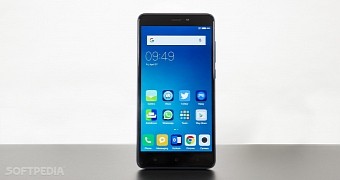
 14 DAY TRIAL //
14 DAY TRIAL // 
